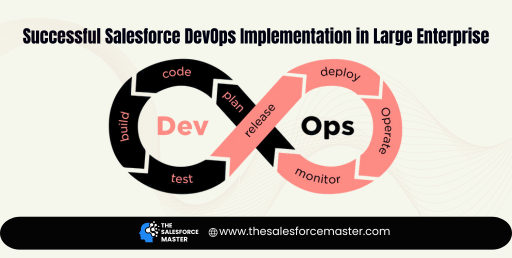
Introduction to Salesforce DevOps
Implementing Salesforce DevOps in a large enterprise can be challenging but rewarding. A well-executed DevOps strategy can transform the way your team works, enhancing efficiency, collaboration, and innovation. By automating workflows and integrating tools, enterprises can achieve faster release cycles and higher-quality outputs.
Key Strategies for Successful Implementation
Building a Collaborative Culture
Fostering a culture of collaboration is essential for successful Salesforce DevOps. Development and operations teams must work together seamlessly. Regular communication and collaboration tools, such as Slack and JIRA, help bridge gaps. When team members share knowledge and insights, issues are resolved faster, and innovations are quickly adopted.
Another key aspect is involving stakeholders early in the process. This ensures that their needs are addressed, and their feedback is incorporated. When everyone is on the same page, the transition to DevOps is smoother and more effective.
Leveraging Automation Tools
Automation is at the heart of Salesforce DevOps. Automated testing, continuous integration, and deployment pipelines reduce human errors and accelerate delivery. Tools like Jenkins, CircleCI, and Salesforce DX streamline processes and ensure code quality. When code is automatically tested and deployed, the development cycle shortens, and the focus can shift to innovation.
Release management tools, such as Gearset and Copado, also play a crucial role. They help manage deployments, track changes, and ensure consistency across environments. These tools provide visibility into the deployment process, making it easier to identify and address issues.
Ensuring Continuous Monitoring and Feedback
Continuous monitoring and feedback loops are vital for maintaining a robust DevOps environment. Monitoring tools like New Relic and Splunk provide real-time insights into system performance and user behaviour. When issues are detected early, they can be resolved before impacting users.
Feedback mechanisms, such as user surveys and performance metrics, offer valuable insights into how the system is performing. By analyzing this data, teams can make informed decisions and continuously improve the system. This iterative approach ensures that the DevOps implementation evolves and adapts to changing needs.
Benefits of Salesforce DevOps in Large Enterprises
Implementing Salesforce DevOps brings numerous benefits to large enterprises. Enhanced collaboration leads to better problem-solving and innovation. Automated processes reduce errors and increase efficiency. Continuous monitoring and feedback ensure that the system remains robust and user-centric. When these elements come together, the enterprise experiences faster release cycles, higher quality outputs, and greater overall agility.
Conclusion
Successfully implementing Salesforce DevOps in a large enterprise requires a collaborative culture, effective use of automation tools, and continuous monitoring and feedback. By focusing on these key strategies, enterprises can significantly improve efficiency, quality, and innovation. The transition to DevOps is an ongoing journey, but the benefits make it a worthwhile investment for any large organization looking to enhance its Salesforce operations.

